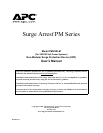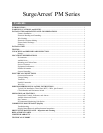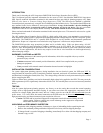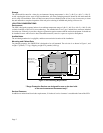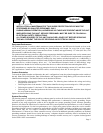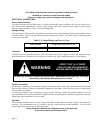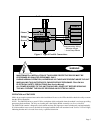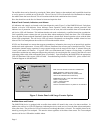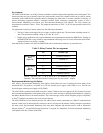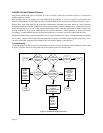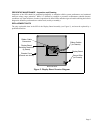
INTRODUCTION
Thank you for choosing the APC SurgeArrest PMH3XLM Series Surge Protection Device (SPD).
This User Manual provides important information for the owner of APCs Non-Modular PMH3XLM SurgeArrest
SPD. Specific technical information contained in this manual has been provided for planning purposes only. Note:
SPDs are also known as Transient Voltage Surge Suppressors (TVSS). The SPD must be installed by qualified/
licensed electrical personnel only, using the Service Manual provided with the device. The installer should follow the
steps outlined in the Service Manual to insure proper installation. A copy of the installer’s invoice detailing the
installation of this device is required in order to obtain warranty service for the device. The only serviceable
component of this device is the Display Board Assembly. This device contains no user-serviceable parts.
Please read and understand all information contained in this manual prior to use. This manual is to be used as a guide
for using the device.
The APC modular Surge Protection Device (SPD) is a high quality, high energy surge attenuation system that has
been designed to protect sensitive equipment from damaging transient voltage surges in 380/220 volt power system
applications. The PMH3XLM unit is a parallel SPD designed for service entrance and downstream panelboard
applications. Proper use is imperative to maximize the surge suppressor’s effectiveness and performance.
The PMH3XLM provides surge protection per phase and is available with a 120kA per phase rating. All APC
products are extensively tested according to industry standards as set by IEC 60950, and is qualified for all circuit
capacities. Note: When planning the placement of this device, consideration should be given to the connection method
to be used. In some applications, this device may require several feet of wire. Increased wire lead length adversely
affects clamping voltages.
WARNINGS, CAUTIONS and NOTES
• Warnings statements in this manual provide information, which if not complied with, may result in
personnel injury or death.
• Cautions statements in this manual provide information, which if not complied with, may result in
damage to equipment.
• Notes presented in this manual contain information deemed essential to highlight.
INSTALLATION CONSIDERATIONS
For system deployment planning purposes, during installation into an electrical system, the SPD must NOT be
energized until the electrical system is completely installed, inspected, and tested. All conductors must be connected
and functional, including the neutral (blue wire). The voltage rating of the device and system must always be verified
before energizing the SPD.
Failure to follow these guidelines can lead to abnormally high voltage being applied to the SPD. This may cause the
SPD to prematurely fail or significantly shorten the effective life. The warranty does not cover an incorrectly installed
device.
TESTING
Also for system deployment planning purposes, any factory or on-site testing that exceeds the normal operating
voltage such as high-potential insulation testing, or any other tests where the suppression components will be
subjected to voltages higher than their rated "turn on" voltage, must be run with the SPD disconnected from the
power source. For 4-wire SPDs, the neutral connection at the SPD must also be disconnected prior to performing
high-potential testing, and then reconnected upon completion of the test.
Caution: The SPD and its associated suppression components must be disconneted during elevated
voltage testing. Failure to comply may result in damage to the suppression components
and/or other electronic components.
UNPACKING and PRELIMINARY INSPECTION
• Inspect the entire shipping container for damage or signs of mishandling before unpacking the unit.
• Remove the cardboard packing and further inspect the unit for any obvious shipping damages.
• If damage found is a result of shipping or handling, immediately file a claim with the shipping company and
forward a copy to APC.
Page 1



